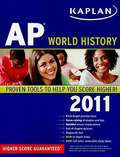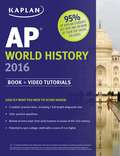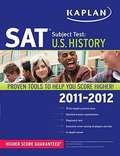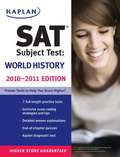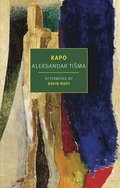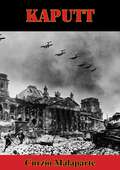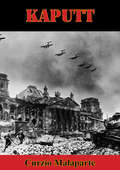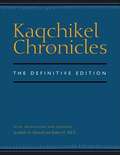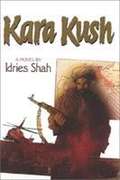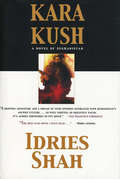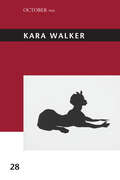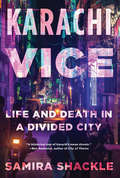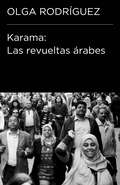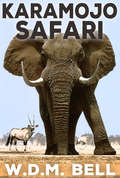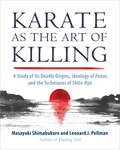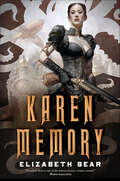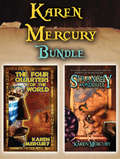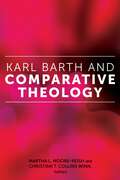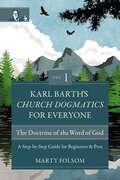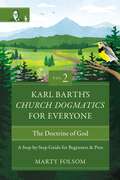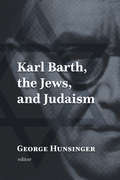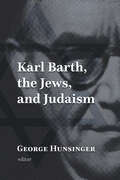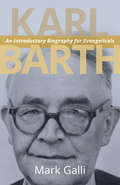- Table View
- List View
Kaplan AP World History 2011
by Patrick Whelan Jennifer LadenYou've spent the year gaining advanced knowledge. Now it's time to reap the rewards: money-saving college credit or advanced placement, and an admissions edge. Yet a top score on the AP exam requires more than knowing the material. Even if your instructor was great and you worked hard in class, you need to get comfortable with the test format itself, preparing for pitfalls and arming yourself with foolproof strategies. That's where the Kaplan plan offers the clear advantage. With more than 70 years of proven test-prep experience, Kaplan has developed unique study guides that provide cutting-edge review while honing your test-taking skills. Kaplan's AP exam preparation guides include everything you need to know to score higher on the test-guaranteed. Let your score soar with these Kaplan features: * Tips from students who earned a perfect 5 on the AP Macroeconomics/Microeconomics exam * Strategies from AP Macroeconomics/Microeconomics teachers * A new group study guide, helping all group members make the most of their study sessions * Breakthrough advice for parents-on everything from using the book as a coaching aid to preparing for exam day * 2 full-length practice tests (essential for learning how to beat the clock) * An intensive diagnostic test so that you can use your time efficiently, targeting weak areas and feeling confident in your strengths * Detailed explanations to the answers, showing you how to think like the authors of the test * Glossary of key terms and concepts * Sample document-based and free-response questions * Proven skill-building techniques that are guaranteed to raise your score * A user-friendly design for navigating the book in a flash Preparation makes the difference, but quality preparation delivers results that can transform your life. Packed with exclusive tips you can only get from Kaplan, this is the ultimate guide for conquering jittery nerves and boosting brain power. Unlock your potential with Kaplan AP Macroeconomics/Microeconomics 2010: the unrivaled, one-stop resource.
Kaplan AP World History 2016
by Patrick WhelanThe Advanced Placement test preparation guide that delivers 70 years of proven Kaplan experience and features exclusive strategies, practice, and review to help students ace the AP World History exam! Students spend the school year preparing for the AP World History test. Now it's time to reap the rewards: money-saving college credit, advanced placement, or an admissions edge. However, achieving a top score on the AP World History exam requires more than knowing the material--students need to get comfortable with the test format itself, prepare for pitfalls, and arm themselves with foolproof strategies. That's where the Kaplan plan has the clear advantage. Kaplan's AP World History 2016 contains many essential and unique features to help improve test scores, including: * Four full-length practice tests and a diagnostic test to target areas for score improvement * Detailed answer explanations * Expert video tutorials * Tips and strategies for scoring higher from expert AP World History teachers and students who got a perfect 5 on the exam * Targeted review of the most up-to-date content, including any information about test changes and key information that is specific to the AP World History exam Kaplan's AP World History 2016 authors Patrick Whelan and Jennifer Laden have a combined total of nearly 40 years of experience teaching world and global history. Their expertise has helped make this and other books the best that Kaplan has to offer in AP test prep. Kaplan's AP World History 2016 provides students with everything they need to improve their scores--guaranteed. Kaplan's Higher Score guarantee provides security that no other test preparation guide on the market can match. Kaplan has helped more than three million students to prepare for standardized tests. We invest more than $4.5 million annually in research and support for our products. We know that our test-taking techniques and strategies work and our materials are completely up-to-date. Kaplan's AP World History 2016 is the must-have preparation tool for every student looking to do better on the AP World History test!
Kaplan SAT Subject Test: U.S. History 2011-2012
by Mark Willner Joann Peters Eugene V. Resnick Jeff SchneiderThis book is designed to help high school students understand their SAT U.S. history test.
Kaplan SAT Subject Test: World History 2010-2011
by Peggy J. MartinKaplan SAT Subject Tests offer the most up-to-date and complete coverage of both content review and strategy needed to achieve a high score on these challenging exams, which can be used for college credit at many schools. Each book contains a Kaplan diagnostic test, full-length practice tests, chapter quizzes, score-raising tips, and detailed answer explanations. Also included is a special section with details and advice on the new SAT score-reporting changes. Kaplan's Higher Score Guarantee gives students a significant edge during these competitive times. With focused content review, proven strategies for scoring higher, and comprehensive test practice, Kaplan SAT Subject Tests get students ready for test day. Kaplan SAT Subject Test: Physicsincludes: 3 full-length Physics practice tests A full-length diagnostic test Focused chapter summaries, highlights, and quizzes Detailed answer explanations Proven score-raising strategies
Kapo
by Aleksander TismaA devastating novel about the attrocities of WWII, and the unspeakable things people did to survive, by one of Yugoslavia's great literary voices.Lamian is a survivor, but a survivor of a very special kind. He was a Kapo, a prisoner who served as a camp guard in order to save himself. But has Lamian saved himself?The war over, he resumes life in the Bosnian town of Banja Luka, works in a land-surveying office, rents a room, eats as many hot potatoes as he likes, not even bothering to salt them—the quantity is what matters. If only he could stop looking over his shoulder and flinching on the street in the fear that some stranger will step forward, smack his face, and say in a loud voice, &“Here&’s one!&”If only he could stop worrying about Helena Lifka, who turned out to be a Yugoslav, and Jewish too; one of the women he made come naked into the toolshed where he hid the gold, and sit on his lap in exchange for bread and butter and a little warm milk. She could turn up any day, an old woman now, and point an accusing finger.In this masterful novel, Aleksandar Tišma shows step by step how fear can turn an ordinary human being into a monster.
Kaputt
by Curzio MalaparteKaputt in its literal meaning is the swan song of a Europe, broken, smashed, finished.Europe was KAPUTT—from the highest military and diplomatic circles living in extravagant splendour, decadence and cruel debauchery, to the dregs of humanity living in filth and rags. A remarkable panorama of the moral and physical decline of European civilisation, KAPUTT is one of the great novels of the century.Curzio Malaparte was born in Prato, Italy, of Austrian, Italian and Russian descent. He served with the French and Italian armies during World War I and gleaned his knowledge of Europe and its leaders from his experience in the Italian diplomatic service and as a correspondent.‘One of the most astonishing documents of our time’—New Yorker‘Incredible and terrifying... an amazing book’—New York Times
Kaputt (New York Review Books. Classics)
by Professor Cesare Foligno Curzio MalaparteKaputt in its literal meaning is the swan song of a Europe, broken, smashed, finished.Europe was KAPUTT--from the highest military and diplomatic circles living in extravagant splendour, decadence and cruel debauchery, to the dregs of humanity living in filth and rags. A remarkable panorama of the moral and physical decline of European civilisation, KAPUTT is one of the great novels of the century.Curzio Malaparte was born in Prato, Italy, of Austrian, Italian and Russian descent. He served with the French and Italian armies during World War I and gleaned his knowledge of Europe and its leaders from his experience in the Italian diplomatic service and as a correspondent.'One of the most astonishing documents of our time'--New Yorker'Incredible and terrifying... an amazing book'--New York Times
Kaqchikel Chronicles: The Definitive Edition
by Judith M. Maxwell Robert M. Hill IIThe collection of documents known as the Kaqchikel Chronicles consists of rare highland Maya texts, which trace Kaqchikel Maya history from their legendary departure from Tollan/Tula through their migrations, wars, the Spanish invasion, and the first century of Spanish colonial rule. The texts represent a variety of genres, including formal narrative, continuous year-count annals, contribution records, genealogies, and land disputes. While the Kaqchikel Chronicles have been known to scholars for many years, this volume is the first and only translation of the texts in their entirety. The book includes two collections of documents, one known as the Annals of the Kaqchikels and the other as the Xpantzay Cartulary. The translation has been prepared by leading Mesoamericanists in collaboration with Kaqchikel-speaking linguistic scholars. It features interlinear glossing, which allows readers to follow the translators in the process of rendering colonial Kaqchikel into modern English. Extensive footnoting within the text restores the depth and texture of cultural context to the Chronicles. To put the translations in context, Judith Maxwell and Robert Hill have written a full scholarly introduction that provides the first modern linguistic discussion of the phonological, morphological, syntactic, and pragmatic structure of sixteenth-century Kaqchikel. The translators also tell a lively story of how these texts, which derive from pre-contact indigenous pictographic and cartographic histories, came to be converted into their present form.
Kara Kush
by Idries ShahAfghan-born, American-schooled, Adam Durany returns to his homeland to lead his people against the Soviet atrocities and communist infiltration that threaten to annihilate his country and its dreams of modernization.
Kara Kush
by Idries ShahIn December of 1979, Soviet tanks rolled across the borders of Afghanistan, beginning a period of barbaric aggression that triggered a turning point in modern history. Idries Shah's brilliant novel chronicles the courageous 10-year resistance of the Afghan people, an epic story of triumph over tyranny that deserves to be immortalized. Kara Kush is the definitive story of freedom fighters. It is a story of patriotism-in-action, mobilized and fueled not by a mass-media propaganda machine, or the charisma of a single individual, but by a thousands-of-years-old tradition of proud independence, deep love of one's land, and fierce will to survive. Kara Kush was first published in 1986, at a time when most of the outside world dismissed the Afghan resistance as a rag-tag lot of rival guerrilla factions in a futile holdout against an invincible military machine. With extraordinary insight into human nature and the course of human history, Kara Kush told the real story. According to author Idries Shah, almost all the people in the text of the novel actually exist-or did. The accounts of battles and raids, precise military details, and the stories of Soviet and Red Afghan atrocities were all from "primary sources"-eye-witnesses, participants, defectors, victims, and prisoners. This remarkable book, among all other sources, offers keys to understanding not only this important strategic region, but the very phase of world history in which we find ourselves today. Much more than a novel, even more than a tribute, Kara Kush stands as a model of human vision, leadership, cooperation, and capacity-at a time when we need it most.
Kara Kush
by Idries ShahA riveting and fast-paced novel in which "Kara Kush"--or "The Eagle," as the Afghan-born, American-schooled, Adam Durany becomes known--returns to his homeland to lead his people against the Soviet atrocities and communist infiltration that threaten to anni Adam, convinced that a resistance movement is imperative, rallies his followers, the ill-equipped patriots, to fight back. Idries Shah, the author of this gripping story, is the best-known Afghan writer of our time. His books on Sufism, philosophy, history, and travel, are known the world over. Shah was the descendant of a thousand-year-old Afghan family, and an author and teacher who found success explaining the East to the West. Kara Kush, first published in 1986, is his only novel: a fascinating adventure in which a gifted writer set out to inform the world about Afghan society, history, and culture. According to interviews with Shah, the novel is based on fact and eyewitness accounts.
Kara Kush
by Idries ShahA riveting and fast-paced novel in which “Kara Kush”—or “The Eagle,” as the Afghan-born, American-schooled, Adam Durany becomes known—returns to his homeland to lead his people against the Soviet atrocities and communist infiltration that threaten to anni Adam, convinced that a resistance movement is imperative, rallies his followers, the ill-equipped patriots, to fight back. Idries Shah, the author of this gripping story, is the best-known Afghan writer of our time. His books on Sufism, philosophy, history, and travel, are known the world over. Shah was the descendant of a thousand-year-old Afghan family, and an author and teacher who found success explaining the East to the West. Kara Kush, first published in 1986, is his only novel: a fascinating adventure in which a gifted writer set out to inform the world about Afghan society, history, and culture. According to interviews with Shah, the novel is based on fact and eyewitness accounts.
Kara Walker (October Files #28)
by Vanina GéréSelected texts that survey the full range of Kara Walker&’s artistic practice, emphasizing the work itself rather than the debates and controversies around it.Kara Walker&’s work and its borrowings from an iconography linked to the fantasized and travestied history of American chattel slavery has been theorized and critiqued in countless texts throughout her career. Exegeses of her work have been shaped by the numerous debates on the very debates it generated. How, then, do we approach a work that has been covered by such &“thick theoretical layers&”? This collection is unique in emphasizing Walker&’s work itself rather than the controversies surrounding it. These essays and interviews survey Walker&’s artistic practice from her early works in the 1990s through her most recent ones, from her famous silhouette projects to her lesser-known drawings and lantern shows. The texts, by art historians, curators, critics, scholars, and writers engage scrupulously with Walker&’s pieces as material works of art, putting them in the context of the sociopolitical and cultural environments that shape—but never determine—them. They include an interview of the artist by Thelma Golden of the Studio Museum in Harlem; an essay in the form of a lexicon, cataloguing key elements in Walker&’s art, by curator Yasmil Raymond; and an essay by volume editor Vanina Géré on Walker&’s use of historical archives. Finally, novelist Zadie Smith considers Walker&’s public art as counter-propositions to colonial monuments and as a reflection on colonial history. ContributorsLorraine Morales Cox, Vanina Géré, Thelma Golden, Tavia Nyong&’o, Yasmil Raymond, Jerry Saltz, Zadie Smith, Anne M. Wagner, Hamza Walker
Karachi Vice: Life and Death in a Divided City
by Samira ShackleA fast-paced, hair-raising journey around Karachi in the company of those who know the city inside out - from an electrifying new voice in narrative non-fiction. Karachi. Pakistan&’s largest city is a sprawling metropolis of twenty million people, twice the size of New York City. It is a place of political turbulence in which those who have power wield it with brutal and partisan force. It takes an insider to know where is safe, who to trust, and what makes Karachi tick. In this powerful debut, Samira Shackle explores the city of her mother&’s birth in the company of a handful of Karachiites. Among them is Safdar the ambulance driver, who knows the city&’s streets and shortcuts intimately and will stop at nothing to help his fellow citizens. There is Parveen, the activist whose outspoken views on injustice repeatedly lead her towards danger. And there is Zille, the hardened journalist whose commitment to getting the best scoops puts him at increasing risk. Their individual experiences unfold and converge, as Shackle tells the bigger story of Karachi over the past decade as it endures a terrifying crime wave: a period in which the Taliban arrive in Pakistan, adding to the daily perils for its residents and pushing their city into the international spotlight. Writing with intimate local knowledge and a global perspective, Shackle paints a vivid portrait of one of the most complex and compelling cities in the world, a city where the borders blur between politicians and gangsters and between lawful and unlawful, as dangerous new forces of violent extremism are pitted against old networks of power.
Karama. Las revueltas árabes (Colección Endebate #Volumen)
by Olga RodríguezEl pasado, el presente y el futuro de las revueltas árabes. Karama (dignidad) es el grito de los levantamientos árabes, unas revueltas que no han hecho más que empezar. La indignación y el deseo de libertad han superado el miedo de miles de personas que nada tienen que perder y han derribado regímenes que parecían eternos. Las protestas se alzan contra la pobreza, la falta de libertades y la colonización económica del primer mundo que, con su doble moral, por una parte fomenta el fundamentalismo mientras por otra lo combate públicamente y lo utiliza como salvoconducto para intervenir. Aunque las revueltas han pasado a un segundo plano en la prensa occidental, Olga Rodríguez explica los motivos de su apogeo, y cómo nada volverá a ser lo mismo en el mundo árabe.
Karamojo Safari
by W. D. M. BellKaramojo Safari, first published in 1949, is a classic story of elephant hunting, safaris, native life, and the wilds of Uganda and Kenya in the late 1800s, at a time when the region (then known as “Karamojo”) was completely unknown to the outside world. Walter Bell (1880-1954), known as Karamojo Bell, was a Scottish adventurer, big game hunter in East Africa, soldier, decorated fighter pilot, sailor, writer, and painter.Famous for being one of the most successful ivory hunters of his time, Bell was an advocate of the importance of shooting accuracy and shot placement with smaller calibre rifles, over the use of heavy large-bore rifles for big African game. He improved his shooting skills by careful dissection and study of the anatomy of the skulls of the elephants he shot. He even perfected the clean shooting of elephants from the extremely difficult position of being diagonally behind the target; this shot became known as the Bell Shot.Although chiefly known for his exploits in Africa, Bell also traveled to North America and New Zealand, sailed windjammers, and saw service in South Africa during the Boer War, and flew in the Royal Flying Corps in East Africa, Greece and France during World War I.
Karate as the Art of Killing: A Study of Its Deadly Origins, Ideology of Peace, and the Techniques of Shito-Ry u
by Masayuki Shimabukuro Leonard PellmanGrounded in a comprehensive overview of the philosophical and spiritual foundations that underlie karate, The Art of Killing emphasizes its original purpose: to kill an attacker swiftly and brutally.Prior to 1900, karate-dō was exclusively an art of unarmed self-defense. Its practice was designed for life-or-death situations--effectively, an art of killing. Here, authors Leonard Pellman and the late Shimabukuru Masayuki restore karate to its original intent. They move karate away from its popular modern-day sporting applications back to its deadly origins---and to the restraining philosophy of peace, self-sacrifice, compassion, and service to others that necessarily accompanied it. With chapters on kokoro (heart, mind, and spirit), ki (spirit and energy), and the seven major precepts of bushidō, The Art of Killing shows readers that the lethal art of karate is more than a method of bringing an enemy down--it&’s a philosophical and spiritual system grounded in essential lessons to guard against abuses of power. This book does not contain detailed instruction in killing methods, but it does showcase the deadly power of karate--and explain why purity of intentions matters, and how compassion and respect are the essence of karate training. Readers will learn: • The purpose and meaning of karate-dō • The origins and major precepts of bushidō • Training methods, preparation, and etiquette • Fundamentals, spiritual power, training patterns, and analysis and application of kata • About the body as a weapon
Karen Memory: A Karen Memory Adventure
by Elizabeth Bear“Bear pumps fresh energy in the steampunk genre with a light touch on the gadgetry and a vivid sense of place . . . Karen and the ladies kick ass.” —Library Journal (starred review)Set in the late nineteenth century—when the city we now call Seattle Underground was the whole town (and still on the surface), when airships plied the trade routes, would-be gold miners were heading to the gold fields of Alaska, and steam-powered mechanicals stalked the waterfront, Karen Memery (“like memory only spelt with an e”) is a young woman on her own, making the best of her orphaned state by working in Madame Damnable’s high-quality bordello. Through Karen’s eyes we get to know the other girls in the house—a resourceful group—and the poor and the powerful of the town. Trouble erupts one night when a badly injured girl arrives at their door, begging for sanctuary, followed by the man who holds her indenture, and who has a machine that can take over anyone’s mind and control their actions. And as if that wasn’t bad enough, the next night brings a body dumped in their rubbish heap—a streetwalker who has been brutally murdered.Bear brings alive this Jack-the-Ripper yarn of the old west with a light touch in Karen’s own memorable voice, and a mesmerizing evocation of classic steam-powered science.“[A] rollicking, suspenseful, and sentimental steampunk novel . . . [Karen’s] story is a timeless one: a woman doing what is needed to get by while dreaming and fighting for great things to come.” —Publishers Weekly
Karen Mercury Bundle
by Karen MercuryIn Strangely Wonderful, along with his pirate crew, captain Tomaj Balashazy rules the Madagascar coast from his tropical plantation--a fortress built to defend against the enemies he's made cruising the Indian Ocean. But when the American naturalist Dagny Ravenhurst falls into Balashazy's lagoon during an expedition seeking a dreaded and mystical species of lemur, it spells the end of the temporary peace on the island. Ravenhurst is beholden to the French industrialist Paul Boneaux--who enjoys a monopoly over the island's manufacturing and commerce--and needs his patronage to survive. When the two adversaries, Balashazy and Boneaux, are pitted against each other, the island boils with blood, and only one will emerge triumphant. In The Four Quarters of the World, Abyssinia, 1866. The crazed (some say) but dynamic Christian King of Kings has taken power as Tewodros II. His vision: to reunite Ethiopia under one crown, one God. To that end he moves his massive, gorgeously arrayed army from province to province. But rebellion is continuous and, in the end, he is Emperor of only the remote and inaccessible rock Magdala, where he holds political prisoners, spouses, and relations he's tired of and fifty Europeans. Into the barbaric and breathtaking kingdom comes American adventurer, linguist, and ethnologist, Captain Ravinger Howland. Becoming Tewodros' right-hand man, Ravi is allowed all the privileges of a royal son: concubines, armory, all the raw beef he can eat but not the returned Queen of Sheba. American doctor Delphine Chambliss, Tewodros believes, is the reincarnation of Makeda from who all Abyssinian kings are descended. But even as Ravi begins to question Tewodros' sanity, he falls for the bitterly bereaved Dr. Chambliss. And now, as the kingdom crumbles, Ravi and Tewodros lock horns over the woman in a battle to the death.
Karl Barth and Comparative Theology (Comparative Theology: Thinking Across Traditions #7)
by Martha L. Moore-Keish and Christian T. Collins WinnBuilding on recent engagements with Barth in the area of theologies of religion, Karl Barth and Comparative Theology inaugurates a new conversation between Barth’s theology and comparative theology. Each essay brings Barth into conversation with theological claims from other religious traditions for the purpose of modeling deep learning across religious borders from a Barthian perspective. For each tradition, two Barth-influenced theologians offer focused engagements of Barth with the tradition’s respective themes and figures, and a response from a theologian from that tradition then follows. With these surprising and stirringly creative exchanges, Karl Barth and Comparative Theology promises to open up new trajectories for comparative theology.Contributors: Chris Boesel, Francis X. Clooney, Christian T. Collins Winn, Victor Ezigbo, James Farwell, Tim Hartman, S. Mark Heim, Paul Knitter, Pan-chiu Lai, Martha L. Moore-Keish, Peter Ochs, Marc Pugliese, Joshua Ralston, Anantanand Rambachan, Randi Rashkover, Kurt Richardson, Mun’im Sirry, John Sheveland, Nimi Wariboko
Karl Barth's Church Dogmatics for Everyone, Volume 1---The Doctrine of the Word of God: A Step-by-Step Guide for Beginners and Pros (Karl Barth’s Church Dogmatics for Everyone)
by Marty FolsomA Guided Tour of One of the Greatest Theological Works of the Twentieth CenturyKarl Barth's Church Dogmatics is considered by many to be the most important theological work of the twentieth century and for many people reading it, or at least understanding its contents and arguments, is a lifelong goal. Yet its enormous size, at over 12,000 pages (in English translations) and enough print volumes to fill an entire shelf, make reading it a daunting prospect for seasoned theologians and novices alike.Karl Barth's Church Dogmatics for Everyone, Volume 1--The Doctrine of the Word of God helps bridge the gap for would-be Karl Barth readers from beginners to professionals by offering an introduction to Barth's theology and thought like no other. User-friendly and creative, this guide helps readers get the gist, significance, and relevance of what Barth intended for the church... to restore the focus of theology and revitalize the practices of the church.Each section contains insights for pastors, new theologians, professionals, and ordinary people including:Summaries of the sectionContextual considerationsAnd other visually informative features that reinforce the main points of the Barth's thoughtIn addition, each volume features the voices of authors from different academic disciplines who contribute brief reflections on the value of Church Dogmatics for creative discovery in their disciplines. Volume 1 reflections include:Douglas Campbell (biblical studies)Myk Habets (systematic theology)Richard Keith (pastors)Julie Canlis (ordinary people)James Chaousis (mental health)John Vissers (spiritual formation)Whether you are just discovering Barth or want a fresh look at his magnum opus, this series invites you to an enjoyable and insightful journey into the Church Dogmatics.
Karl Barth's Church Dogmatics for Everyone, Volume 2---The Doctrine of God: A Step-by-Step Guide for Beginners and Pros (Karl Barth’s Church Dogmatics for Everyone)
by Marty FolsomA Guided Tour of One of the Greatest Theological Works of the Twentieth CenturyKarl Barth's?Church Dogmatics?is considered by many to be the most important theological work of the twentieth century and for many people reading it, or at least understanding its contents and arguments, is a lifelong goal. Yet its enormous size, at over 12,000 pages (in English translations) and enough print volumes to fill an entire shelf, make reading it a daunting prospect for seasoned theologians and novices alike.Karl Barth's Church Dogmatics for Everyone, Volume 2--The Doctrine of God?helps bridge the gap for would-be Karl Barth readers from beginners to professionals by offering an introduction to Barth's theology and thought like no other. User-friendly and creative, this guide helps readers get the gist, significance, and relevance of what Barth intended for the church... to restore the focus of theology and revitalize the practices of the church.Each section contains insights for pastors, new theologians, professionals, and ordinary people including:Summaries of the sectionContextual considerationsAnd other visually informative features that reinforce the main points of the Barth's thoughtIn addition, each volume features the voices of authors from different academic disciplines who contribute brief reflections on the value of?Church Dogmatics?for creative discovery in their disciplines. Volume 2 reflections include:Chris Tilling (biblical studies)David Guretzki (systematic theology)Earl Palmer (pastors)Wyatt Houtz (ordinary people)Andrew Howie (mental health)James Houston (spiritual formation)Ross Hastings (science)Jeremy Begbie (the arts)Whether you are just discovering Barth or want a fresh look at his magnum opus, this series invites you to an enjoyable and insightful journey into the?Church Dogmatics.
Karl Barth, the Jews, and Judaism
by George HunsingerHow Jewish was Karl Barth? This provocative question by David Novak opens Karl Barth, the Jews, and Judaism—a volume that brings together nine eminent Jewish and Christian theologians reflecting on a crucial aspect of Barth&’s thought and legacy. These scholarly essays not only make a noteworthy contribution to Barth studies but also demonstrate creative possibilities for building positive Jewish-Christian relations without theological compromise.Contributors & TopicsDavid Novak on the extent to which Barth thought like a JewEberhard Busch on three Jewish-Christian milestones in Barth&’s lifeGeorge Hunsinger on Christian philo-Semitism and supersessionismPeter Ochs on Barthian elements in Jewish-Christian dialogueVictoria J. Barnett on Barth and post-WWII interfaith encountersThomas F. Torrance on Israel&’s divine calling in world historyC. E. B. Cranfield on Pauline texts pertinent to Jewish-Christian relationsHans Küng on moving from anti-Semitism to theological dialogueEllen T. Charry on addressing theological roots of enmity
Karl Barth, the Jews, and Judaism
by George HunsingerHow Jewish was Karl Barth? This provocative question by David Novak opens Karl Barth, the Jews, and Judaism—a volume that brings together nine eminent Jewish and Christian theologians reflecting on a crucial aspect of Barth&’s thought and legacy. These scholarly essays not only make a noteworthy contribution to Barth studies but also demonstrate creative possibilities for building positive Jewish-Christian relations without theological compromise.Contributors & TopicsDavid Novak on the extent to which Barth thought like a JewEberhard Busch on three Jewish-Christian milestones in Barth&’s lifeGeorge Hunsinger on Christian philo-Semitism and supersessionismPeter Ochs on Barthian elements in Jewish-Christian dialogueVictoria J. Barnett on Barth and post-WWII interfaith encountersThomas F. Torrance on Israel&’s divine calling in world historyC. E. B. Cranfield on Pauline texts pertinent to Jewish-Christian relationsHans Küng on moving from anti-Semitism to theological dialogueEllen T. Charry on addressing theological roots of enmity
Karl Barth: An Introductory Biography for Evangelicals
by Mark GalliThis refreshingly accessible introduction to Karl Barth by Mark Galli takes readers on a whirlwind tour of the life and writings of this giant of twentieth-century theology. Galli pays special attention to themes and topics of concern for contemporary evangelicals, who may need Barth&’s acute critique as much as early-twentieth-century liberals did—and for surprisingly similar reasons.
